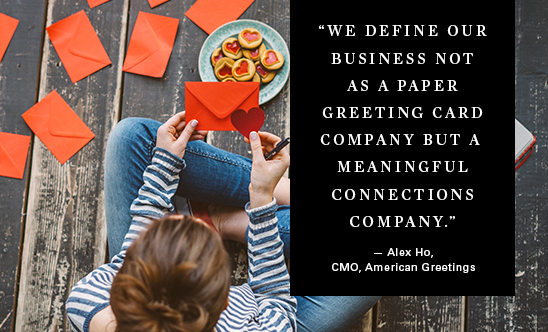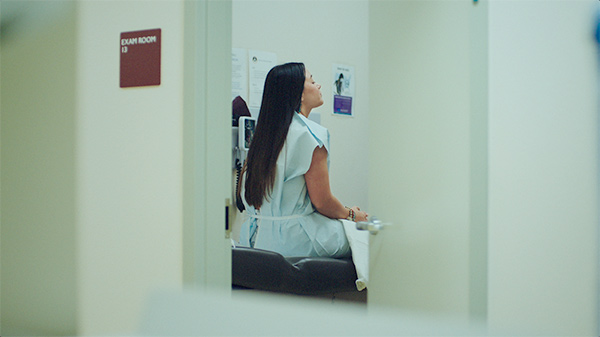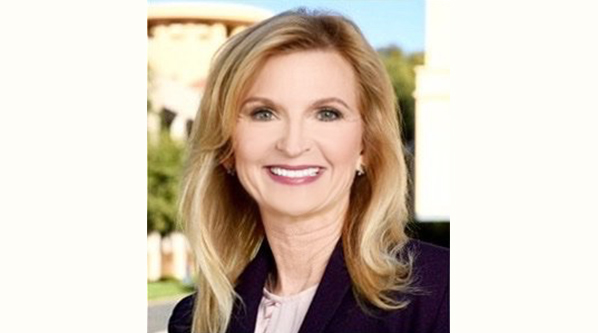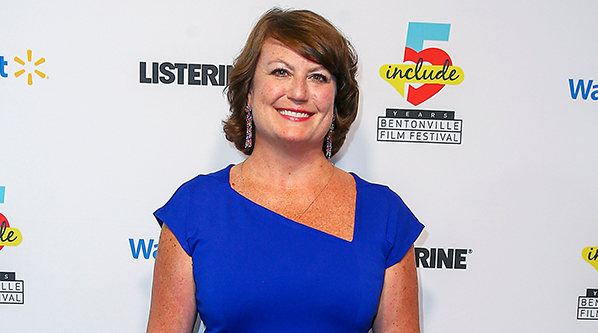

“We define our business not as a paper greeting card company, but a meaningful connections company.”
— Alex Ho, CMO, American Greetings
Alex Ho is Chief Marketing Officer at American Greetings, the world’s largest greeting card producer. He’s been leading the company’s efforts to keep greeting cards relevant in a digital age. He recently spoke to SheReports about how American Greetings helps consumers deepen their relationships.
Happy Valentine’s Day! How much is your business is these big holidays, versus the everyday life events you’re focusing on in your current “Give Meaning” campaign?
Certainly seasonal greeting cards contribute a lot of volume to the business. According to the Greeting Card Association, there are about 145 million Valentine’s Day cards exchanged every year — and that’s not including the kids’ classroom valentines. But as digital means of communication have increased, greeting cards have started to take a new but meaningful role in consumers’ lives. Among younger users, it’s hard now to differentiate a casual Facebook friend from somebody who actually has a meaningful relationship with you. Millennials, in particular, are using greeting cards. In fact, they’re buying more expensive greeting cards to communicate something that digital communications aren’t able to provide, which is something more personal, more heartfelt and more customized for the recipient.
Millennials, in particular, are using greeting cards. In fact, they’re buying more expensive greeting cards to communicate something that digital communications aren’t able to provide, which is something more personal, more heartfelt and more customized for the recipient.
Who purchases greeting cards, and how is that shifting?
Greeting cards skew female, but they skew slightly female. I think most people would assume that it’s predominantly female. At a holiday like Valentine’s Day, men contribute about equally to purchases as do women. Millennials are the fastest growing segment because they are aging into what you would call the peak greeting card years. Weddings, showers, birth announcements, being the young mom organizing parties — all of those life stage things where greeting cards play an increasing role.
Greeting cards skew female, but they skew slightly female. I think most people would assume that it’s predominantly female.
How does that affect your marketing?
We tailor marketing communications toward females because of the purchase behavior. And I think what businesses need to realize is that unless you portray women accurately, your message won’t get though. For us, one of the challenges of greeting cards is many people see greeting cards as the greeting card of your mother or grandmother’s era. They’re overly sappy or sentimental and not genuine or authentic to you. But in reality, our greeting cards today are very resonant with all kinds of humor and all kinds of people. What we want to do is portray that greeting cards are, in fact, like you. For us to portray that without portraying women in an authentic way would be completely inconsistent with our product and what our product does. Those authentic, real connections are exactly what our business is about.

We also portray a broad spectrum of all kinds of demographics and psychographics in our marketing. As the world’s largest greeting card producer, we have a line of products for almost every audience you might imagine. Greeting cards are a product you don’t usually buy for yourself. You buy this product explicitly to give it away. So the product you’re buying needs to fit the recipient exactly. You have in your mind who they are, what their interests might be, what kind of sentiment or messaging might be appropriate.
Getting the perfect card means having a wide assortment out there in the marketplace. Our advertising tends to reflect a broad spectrum of consumers because the people buying them, predominantly women, need to buy for a lot of recipients.
…what businesses need to realize is that unless you portray women accurately, your message won’t get through.
The dual focus is interesting. You’re not targeting just a buyer but also this whole variety of other audiences who are on the receiving end.
We target toward the buyer, and we’re simply reflecting situations within our marketing that reflect potential recipients’ situations. Within our most recent campaign, “What It Means to Love,” we produced an ad that comprises a series of vignettes of couples in different types of relationships — mother-child, husband-wife, other situations — that reflect the broad audience of what these relationships might look like, in order to communicate that, yes, there is sentiment and there is a greeting card for a variety situations.

The 90-second version is really sweet.
That’s part of our objective, to talk about this category in terms of the emotional benefit of greeting cards, which we believe is a unique medium that actually connects people, bringing them closer together. We define our business not as a paper greeting card company but a meaningful connections company.
We define our business not as a paper greeting card company but a meaningful connections company.
This is all part of your effort to keep greeting cards relevant in the digital age. Are you finding that this campaign is working?
Yes. Throughout all of the American Greetings efforts — whether that’s the “Give Meaning” campaign, whether it’s through our disruptive experiential marketing, like showing up at South by Southwest Interactive or the Consumer Electronics Show — all of these are increasing on our consumer KPIs in terms of new awareness, category relevance, increase in purchase intent. I think we as an industry have been lax, pretty silent about the role of greeting cards during the rise of social media. Our campaigns are now beginning to do exactly that.

Last summer you did a campaign around infertility. What was the response?
Overwhelmingly positive. We were astounded by the immediate response. It’s a topic that is not talked about a lot, and we had reason to believe that was because people found it a difficult topic to engage in with someone else. We knew that our insights and our history showed that those are the perfect situations in which greeting cards can serve a role — to bridge the gap of communication, to be able to start a communication in a way that’s safer than just blurting it out. The ad, “Not Alone,” got a whole group of people who previously felt like they had nowhere to turn and no one to talk to about it to begin talking about it. In a normal Facebook post about an ad, you might see a lot of shares and short comments like “See this ad, this is a nice or funny ad.”
But the comments on “Not Alone” were three-paragraph statements from women and men, talking about their own journey within fertility. And being able to talk about it finally because they had permission to. We received an outpouring of gratitude and engaGEM®ent like we’ve never seen before.
In finding ways for customers to express authentic moments, you created an authentic moment of your own.
And that’s entirely consistent with our purpose, which is to make the world a more thoughtful and caring place.
More From the February Relationship Issue of SheReports:
- SheReport: Building an Army of Brand Ambassadors
- SheReport: Dating App Ghostwriter
- SheReport: Love, Virtually
- SheReport: #MeToo Dating Blues
- SheReport: On the Sidelines
- SheReport: What Women Want in Partners



